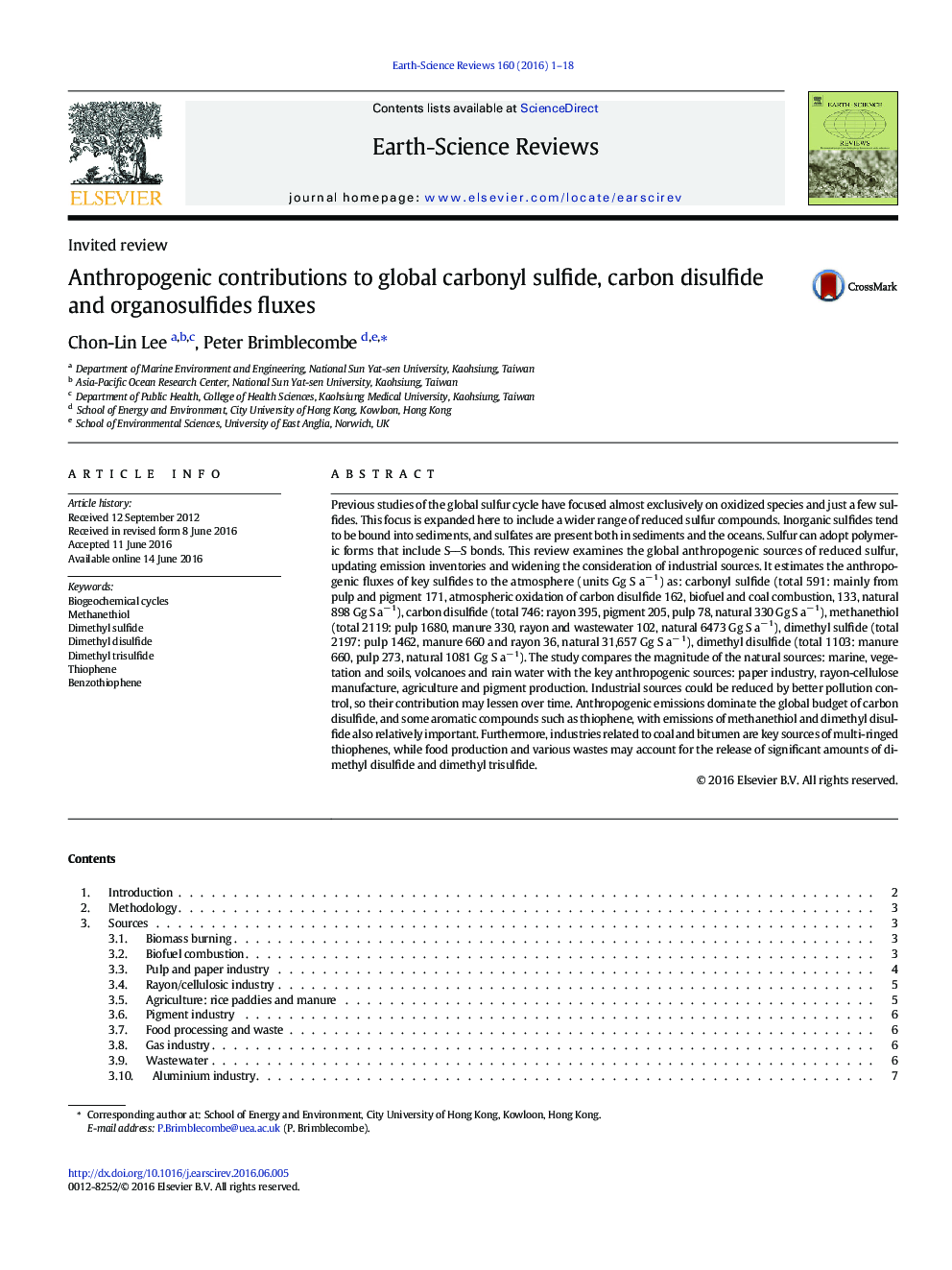| کد مقاله | کد نشریه | سال انتشار | مقاله انگلیسی | نسخه تمام متن |
|---|---|---|---|---|
| 6442802 | 1639942 | 2016 | 18 صفحه PDF | دانلود رایگان |
عنوان انگلیسی مقاله ISI
Anthropogenic contributions to global carbonyl sulfide, carbon disulfide and organosulfides fluxes
ترجمه فارسی عنوان
کمک های انسان شناسی به کربنیل سولفید جهانی، سولفید کربن و جیوه ارگانواسولفید
دانلود مقاله + سفارش ترجمه
دانلود مقاله ISI انگلیسی
رایگان برای ایرانیان
کلمات کلیدی
چرخه بیوگرافی شیمیایی، متانتیال، دی متیل سولفید، دی متیل دی سولفید، دی متیل تری سولفید، تیوفن، بنزوتوفن،
موضوعات مرتبط
مهندسی و علوم پایه
علوم زمین و سیارات
زمین شناسی
چکیده انگلیسی
Previous studies of the global sulfur cycle have focused almost exclusively on oxidized species and just a few sulfides. This focus is expanded here to include a wider range of reduced sulfur compounds. Inorganic sulfides tend to be bound into sediments, and sulfates are present both in sediments and the oceans. Sulfur can adopt polymeric forms that include SS bonds. This review examines the global anthropogenic sources of reduced sulfur, updating emission inventories and widening the consideration of industrial sources. It estimates the anthropogenic fluxes of key sulfides to the atmosphere (units Gg S aâ 1) as: carbonyl sulfide (total 591: mainly from pulp and pigment 171, atmospheric oxidation of carbon disulfide 162, biofuel and coal combustion, 133, natural 898 Gg S aâ 1), carbon disulfide (total 746: rayon 395, pigment 205, pulp 78, natural 330 Gg S aâ 1), methanethiol (total 2119: pulp 1680, manure 330, rayon and wastewater 102, natural 6473 Gg S aâ 1), dimethyl sulfide (total 2197: pulp 1462, manure 660 and rayon 36, natural 31,657 Gg S aâ 1), dimethyl disulfide (total 1103: manure 660, pulp 273, natural 1081 Gg S aâ 1). The study compares the magnitude of the natural sources: marine, vegetation and soils, volcanoes and rain water with the key anthropogenic sources: paper industry, rayon-cellulose manufacture, agriculture and pigment production. Industrial sources could be reduced by better pollution control, so their contribution may lessen over time. Anthropogenic emissions dominate the global budget of carbon disulfide, and some aromatic compounds such as thiophene, with emissions of methanethiol and dimethyl disulfide also relatively important. Furthermore, industries related to coal and bitumen are key sources of multi-ringed thiophenes, while food production and various wastes may account for the release of significant amounts of dimethyl disulfide and dimethyl trisulfide.
ناشر
Database: Elsevier - ScienceDirect (ساینس دایرکت)
Journal: Earth-Science Reviews - Volume 160, September 2016, Pages 1-18
Journal: Earth-Science Reviews - Volume 160, September 2016, Pages 1-18
نویسندگان
Chon-Lin Lee, Peter Brimblecombe,
